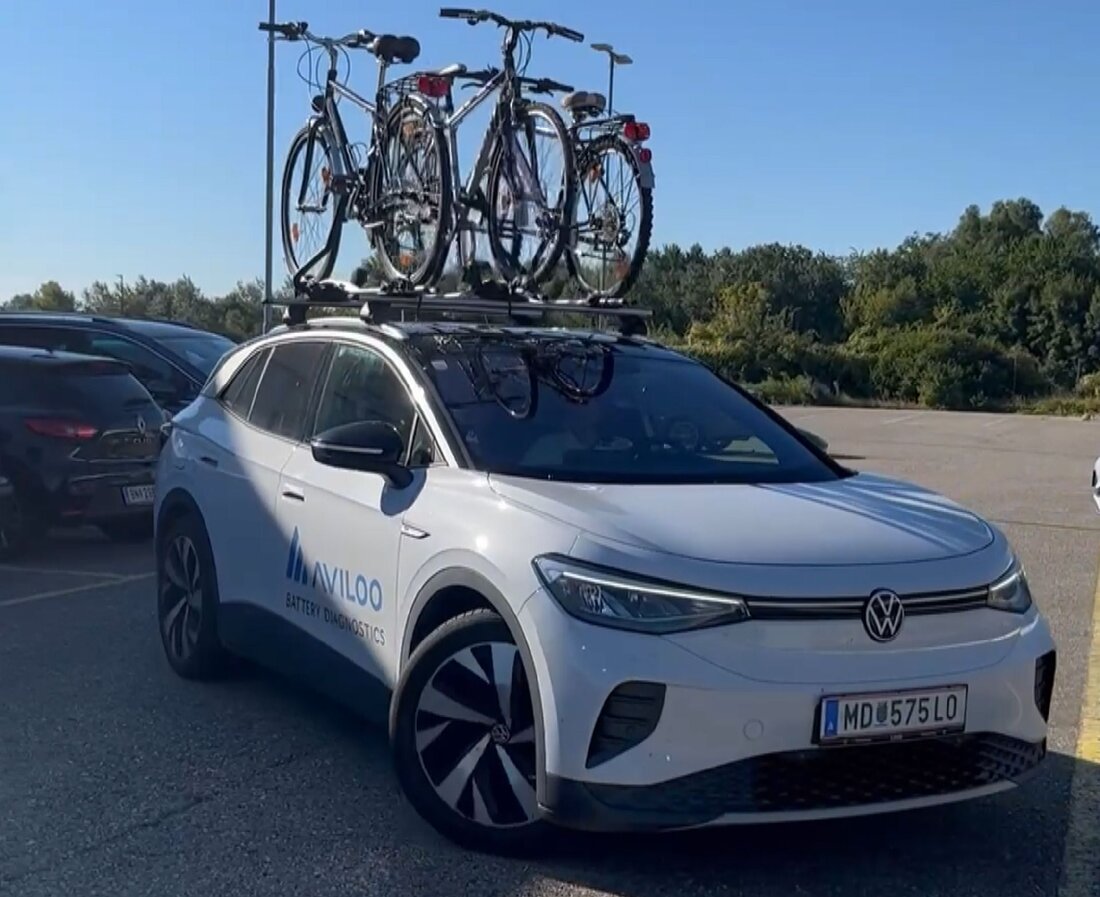Bicycles cost range
A detailed practical test by the battery testing expert Aviloo on the effects of taking bicycles with you in your car debunks myths and provides facts.

Bicycles cost range
The range of electric vehicles is and remains a hotly debated topic - especially when additional cargo such as bicycle or ski racks comes into play. Many electric car owners ask themselves: How much do loaded carriers actually affect the efficiency of my vehicle? Aviloo, a specialist in EV battery diagnostics from Lower Austria, now provides the answers to these questions. As part of an elaborately planned case study, Aviloo analyzed the energy consumption of an electric VW ID.4 SUV under real and controlled conditions on the A2 south of Vienna. Three scenarios were tested: once without a vehicle rack, once with a loaded roof rack and once with a loaded rear rack. The load consisted of three 28 inch trekking bikes.
Controlled test conditions
Each configuration was tested at night over a set 60-kilometer route on the A2 motorway south of Vienna to avoid traffic interference. The following fixed test parameters were adhered to throughout: constant speed via cruise control, tire pressure, summer tires, air conditioning and heating not in operation, windows closed, dry road surface and wind speed below 15km/h. The results: As expected, the four trips without luggage and porters had the lowest kWh expenditure per 100km. However, there were serious differences in the load on the outside of the vehicle, which increased as the speed increased. Conclusion: The roof rack is the biggest range killer. For example, if you are traveling at 130 km/h, you would have to reduce your speed by a whopping 33 km/h to 97 km/h in order to achieve the same consumption as without a load. The rear carrier, on the other hand, only has a minor effect. The required speed reduction is only 7 km/h - so it is hardly noticeable. This means: With a rear rack, the usual driving style is possible with almost no restrictions.
Half-truths refuted
“We want to create clarity with our investigation,” explains Nikolaus Mayerhofer, CTO of Aviloo and test driver in all rounds of the investigation. "There are many half-truths around the topic of increased consumption due to loading. Our measurements clearly show that the carrier load at the rear of the vehicle has little effect on range and driving habits. However, if you load on the roof, you have to expect noticeable losses. The main physical reason for the significant differences is air resistance - its influence on consumption does not increase linearly, but as a square. At twice the speed, air resistance quadruples the energy expenditure." Aviloo therefore recommends that all electric car drivers: Anyone traveling with sports or leisure luggage should consistently use rear racks. This not only saves energy, but also enables the usual travel routines without additional charging breaks or laborious route adjustments.

 Suche
Suche
 Mein Konto
Mein Konto